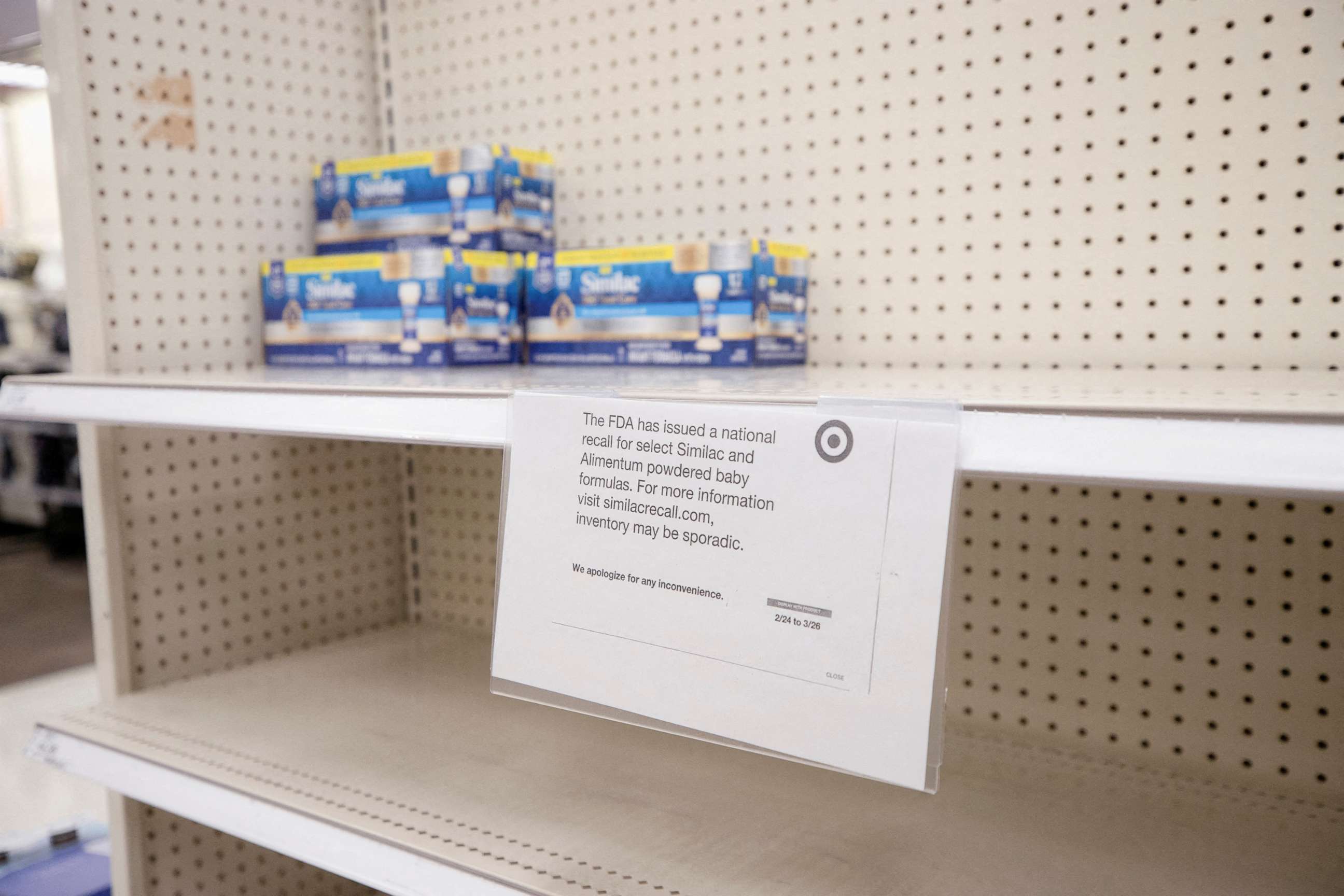Baby formula timeline: Plant posed a risk last fall
The FDA found problems at an Abbott facility in September — and again this year.
Federal regulators warned months ago of potential problems at a manufacturing plant for baby formula, according to documents and a public timeline of the events, raising questions about whether more could have been done sooner by the government to address operational issues and prevent a nationwide shortage.
Inspection reports by the Food and Drug Administration, as well as a 34-page whistleblower report from a former employee of Abbott Laboratories, suggest the FDA first became aware last fall of suspected sanitation issues at an Abbott facility in Sturgis, Michigan. But it wasn’t until mid-February after the agency detected deadly bacteria inside the plant that Abbott issued a voluntary recall — a drastic move that syphoned off a significant portion of the nation’s supply.
Months after that, concerns still remain about what is taking so long to get the facility running again safely, as families scramble for access to formula.

"We know there have been questions about the timeline," the FDA said in a statement released Friday. "However, this remains an open investigation with many moving parts. We are continuing to investigate and will continue to update you as information becomes available. Once the immediate risk to the public has been addressed, we will conduct a review and, as outlined in our recently released Foodborne Outbreak Response Improvement Plan, we will build in performance measures across the FDA's foods program to better evaluate the timeliness and effectiveness of outbreak and regulatory investigation activities."
For its part, Abbott said it has been working to resolve the FDA's concerns and, subject to federal approval, could restart operations at the Michigan plant within two weeks.
Abbott says there is no evidence its products contributed to the cases of two infant deaths.
"We are confident that we can continue to produce safe, high-quality infant formula at all of our facilities as we have been doing for millions of babies around the world for decades," the company said.

Here's what to know about the timeline of the agency investigation.
September 2019: The FDA conducts an inspection of the Sturgis plant, with one infraction on testing.
Sept. 20, 2021: The FDA conducts an inspection of the plant, noting that personnel working directly with formula didn't properly wash their hands when needed and didn't change gloves after touching "non-food" contact surfaces.
"You did not maintain a building used in the manufacture, processing, packing or holding of infant formula in a clean and sanitary condition," the FDA concludes in its September 2021 report.
On the same day that FDA inspectors are inside the Sturgis plant, the Minnesota Department of Health alerts the agency that an infant was sickened by a bacteria called Cronobacter sakazakii after drinking formula produced in the Sturgis plant. Investigators later, however, do not find a substantive link between the plant's formula and the child's illness.
Oct. 20, 2021: In a 34-page document, a whistleblower at the plant alleges to the FDA that Abbott has been releasing untested infant formula, hiding information during past FDA audits and imposing lax cleaning practices. None of these claims have been independently verified. According to Rep. Rosa DeLauro, a Democrat from Connecticut, who later releases the whistleblower report, the FDA interviews that person in late December.
Feb. 1, 2022: The FDA collects samples at the plant that confirm the presence of the dangerous Cronobacter bacteria and cite several violations, according to an inspection report.
Feb. 17, 2022: The FDA says it is investigating reports of four illnesses in three states, including one baby who died. Abbott announces a voluntary recall of potentially affected products, including Similac, Alimentum and EleCare powdered formulas manufactured in its Sturgis facility.
Feb. 28, 2022: The FDA announces a second death and Abbott expands its recall.
ABC News' Sony Salzman contributed to this report.




